by Jon LeSage, editor and publisher, Green Auto Market
Here’s my take on the 10 most significant and interesting occurrences during the past week…….
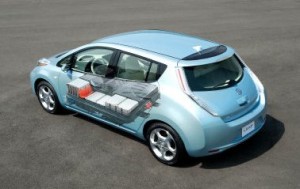 Nissan Leaf will go over 200: The next-generation Nissan Leaf will be able to travel more than 200 miles per charge from its 60-kWh battery, said Kazuo Yajima, Nissan’s global director of EV and HEV engineering. Yajima spoke to AutoblogGreen at the Electric Vehicle Symposium (EVS29) in Montreal. It’s coming, but he couldn’t say when. Yajima said the 60-kWh pack will more drive the car 210-220 miles per charge, which is more than double the range from the current Leaf’s 24 kWh battery. Nissan had placed the 60-kWh pack in the IDS concept car revealed last November. Watch AutoblogGreen’s Sebastian Blanco doing a video report on what it’s like this week in the expo hall at EVS29. You can hear Yajima talk about Nissan’s new battery pack during the video.
Nissan Leaf will go over 200: The next-generation Nissan Leaf will be able to travel more than 200 miles per charge from its 60-kWh battery, said Kazuo Yajima, Nissan’s global director of EV and HEV engineering. Yajima spoke to AutoblogGreen at the Electric Vehicle Symposium (EVS29) in Montreal. It’s coming, but he couldn’t say when. Yajima said the 60-kWh pack will more drive the car 210-220 miles per charge, which is more than double the range from the current Leaf’s 24 kWh battery. Nissan had placed the 60-kWh pack in the IDS concept car revealed last November. Watch AutoblogGreen’s Sebastian Blanco doing a video report on what it’s like this week in the expo hall at EVS29. You can hear Yajima talk about Nissan’s new battery pack during the video.- EV incentives on hold in California: The California legislature has passed a new budget, awaiting Governor Jerry Brown’s signature, which cuts off funds for the state’s clean vehicle subsidies. EV advocates are waiting to see if a compromise will be made before the governor signs the bill, or if a new measure will be introduced. If the governor does sign this bill, subsidies will be cut including consumer rebates for electrified vehicles, “environmentally friendly” heavy trucks, and other clean vehicle programs. Car buyers seeking incentive funds are on a waiting list for now. A Los Angeles Times article says it may have to do with how the state is spending funds generated by its cap-and-trade program. California’s cap-and-trade auction credit system requires businesses like oil refineries and manufacturers to buy permits based on how much they pollute. The governor may be holding onto the funds to get lawmakers to reach a deal this summer on extending the life of the cap-and-trade program. That state program is facing legal questions over whether it can keep operating past 2020.
- SCAQMD webinar on $50M funding: Join the South Coast Air Quality Management District (SCAQMD) for a complimentary one-hour webinar to learn about the $50 million in California’s new Proposition 1B funding for: heavy-duty truck replacements; truck stop electrification; electric charging stations; hydrogen fueling stations, and other topics. With this free webinar, SCAQMD is aiming to ensure all the relevant fleets that operate Class 6, 7 or 8 trucks are well aware of the funding that could be available to them. The program is presented by Vicki White, Program Supervisor, SCAQMD. It will take place Thursday, June 23, at 2:00 p.m. PDT. Click here to register.
- Attacking Uber’s surge pricing: Gett is taking swipes at competitor Uber in a New York City ad campaign aimed at resentments over surge pricing. The campaign targets Uber’s surge pricing, which takes hold when rider demand is high. Gett, an on-demand black-car app that’s available in more than 60 cities worldwide, is placing its ads on 570 subway cars, phone kiosks, digital street-level billboards, and bus shelters around the city. Gett, which received a $300 million strategic investment from Volkswagen Group last month, is tapping into riders’ annoyance with having their fares increased 1.5 times the usual fare – and sometimes up to two or three times the fare. Gett emphasizes that it doesn’t have surge pricing in the ads.
- EVgo brings in new investor: Charging networking supplier EVgo, which was started years ago by electric utility NRG Energy, has become an independent company. Vision Ridge Partners, a climate action-oriented investment firm, has closed on its major investment in EVgo. This move supports EVgo’s mission of expanding its charging network, including its commitment to deploying public fast charging stations. EVgo has worked closely with automakers like Nissan, BMW, and Ford to develop a vehicle-centric customer experience. EVgo operates 665 fast chargers in more than 50 top metro markets across the country.
- New EV telematics service: FleetCarma, a provider of telematics systems for electric vehicles, announced at EVS29 the launch of a new product for fleets seeking to increase the number of electric vehicles they operate. Fleets connecting the new telematics device, named the C2, to gasoline, diesel, and hybrid vehicles in their fleet receive the immediate benefits of standard telematics, while the system also uses the operational data to identify optimal vehicles for replacement with electric vehicles. The single telematics system provides immediate telematics benefits on the gasoline and diesel vehicles while providing the long term benefits of optimized electric vehicle deployment.
- Didi investment grows: Didi Chuxing Technology Co., China’s leading ridesharing company and Uber competitor, has raised $7.3 billion in its latest fundraising effort, giving it a host of powerful allies including Apple Inc., to establish its strong market presence. A recent funding round attracted Apple’s recent $1 billion investment, China Life Insurance Co., and the financial affiliate of online shopping firm Alibaba Group Holding Ltd. The round valued the company at nearly $28 billion, people familiar with the matter said.
- CEC grant: The California Energy Commission has approved $13.5 million to showcase low- and zero-emission vehicles at two of the state’s busiest seaports, to identify and install electric vehicle charging sites at California’s national parks, and to complete hydrogen refueling station evaluations. Project funds are from the Alternative and Renewable Fuel and Vehicle Technology Program (ARFVTP). According to the CEC, the ARFVTP has invested more than $606 million to date and funded more than 543 clean transportation projects.
- Uber and Hyundai alliance: Uber wants to partner with Hyundai on the development of self-driving technology in the automaker’s home country, according to Maeil Business News Korea. Uber is also poised to place an order for a huge number of Hyundai vehicles. In April, automakers Ford and Volvo, ride-sharing rivals Lyft and Uber and tech giant Google joined forces to form the Self-Driving Coalition for Safer Streets.
- NASA electric planes: NASA has unveiled plans to spend the next decade working on electric planes under the ‘X-57’ moniker. One plane will be based on the Italian Tecnam P2006T, a very efficient 4 seat light aircraft. Its smaller 12 motors will only be used for takeoffs. The larger two engines on the end of the wings will propel the plane during cruising which is expected to be a solid 175 mph.





 Volkswagen Group just made a commitment to change its business strategy in the wake of the diesel emissions scandal that started last September. The German automaker will be introducing more than “30 new pure electric vehicles” by 2025, while also establishing a mobility solutions division. Two other German automakers are heading down a similar path. Daimler will be introducing a long-range electric vehicle this fall at the Paris auto show, but it’s just the tip of the iceberg for its electrification strategy, according to Mercedes-Benz USA’s chief executive. BMW will be adding to the i Series with the “i Next” as the automaker combines autonomous mobility with electrification in the BMW and Mini brands.
Volkswagen Group just made a commitment to change its business strategy in the wake of the diesel emissions scandal that started last September. The German automaker will be introducing more than “30 new pure electric vehicles” by 2025, while also establishing a mobility solutions division. Two other German automakers are heading down a similar path. Daimler will be introducing a long-range electric vehicle this fall at the Paris auto show, but it’s just the tip of the iceberg for its electrification strategy, according to Mercedes-Benz USA’s chief executive. BMW will be adding to the i Series with the “i Next” as the automaker combines autonomous mobility with electrification in the BMW and Mini brands.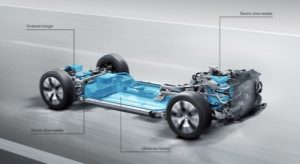 Daimler green powertrain plan: Daimler will be
Daimler green powertrain plan: Daimler will be  If you’re a fan of science fiction author Philip K. Dick, and movies made from his writings, you’ve probably been thinking about flying cars for years. Featured in the Do Androids Dream of Electric Sheep? novel and Blade Runner film – and “The Electric Ant” and “Minority Report” short stories (along with the Steven Spielberg film Minority Report) – flying cars will be one of the mobility options we use daily, according to the author.
If you’re a fan of science fiction author Philip K. Dick, and movies made from his writings, you’ve probably been thinking about flying cars for years. Featured in the Do Androids Dream of Electric Sheep? novel and Blade Runner film – and “The Electric Ant” and “Minority Report” short stories (along with the Steven Spielberg film Minority Report) – flying cars will be one of the mobility options we use daily, according to the author.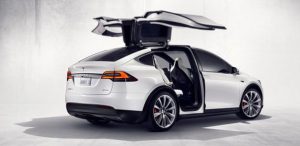 May EV and hybrid sales: The Tesla Model X has seen a huge sales increase – up a third from the previous month. Consumer Reports did feature a critical review in print and video, focused mainly on concerns with the falcon doors and too many bells and whistles versus practical features. That was released last week, so we’ll have to check on June sales to see if it’s having an impact. The Model S is seeing some decline in sales month-over-month and year-over-year. The Ford Fusion Energi is doing well in sales, and is getting closer to the Fusion Hybrid in overall sales numbers. The Ford C-Max Energi continues to soften in sales. Overall battery electric and plug-in hybrid electric vehicle sales were flat from April, and were up 5.5% over May 2015. Hybrid sales as a share of total U.S. new vehicle sales increased slightly – up to 2% of the total share after it had been hovering below the 2% mark for several months. Since it was debuted in January 2015, the Toyota RAV4 Hybrid has become a hot seller. Now at No. 2 in the rankings, it came in at No. 9 during the month of December 2015 with 1,430 units sold that month. The hybrid version was debuted a few months after Toyota halted production of the low-selling all-electric RAV4.
May EV and hybrid sales: The Tesla Model X has seen a huge sales increase – up a third from the previous month. Consumer Reports did feature a critical review in print and video, focused mainly on concerns with the falcon doors and too many bells and whistles versus practical features. That was released last week, so we’ll have to check on June sales to see if it’s having an impact. The Model S is seeing some decline in sales month-over-month and year-over-year. The Ford Fusion Energi is doing well in sales, and is getting closer to the Fusion Hybrid in overall sales numbers. The Ford C-Max Energi continues to soften in sales. Overall battery electric and plug-in hybrid electric vehicle sales were flat from April, and were up 5.5% over May 2015. Hybrid sales as a share of total U.S. new vehicle sales increased slightly – up to 2% of the total share after it had been hovering below the 2% mark for several months. Since it was debuted in January 2015, the Toyota RAV4 Hybrid has become a hot seller. Now at No. 2 in the rankings, it came in at No. 9 during the month of December 2015 with 1,430 units sold that month. The hybrid version was debuted a few months after Toyota halted production of the low-selling all-electric RAV4. US-China electric bus competition: On Friday in Los Angeles, U.S. Secretary of Transportation Anthony Foxx and Chinese Minister of Transport Yang Chuantang signed an agreement officially announcing the US-China “Race to Zero Emissions.” One city from each of the two countries will be competing to determine which one will deploy the highest percentage of emission free buses by 2025. The race is designed to improve air quality in urban areas and prevent climate change. For each of the cities entering the competition, the minimum size of the fleet must be 200 or more buses. Two smaller transit properties can form a team and compete in the race if their combined fleet size is 200 buses or more. Potential participants can learn more at
US-China electric bus competition: On Friday in Los Angeles, U.S. Secretary of Transportation Anthony Foxx and Chinese Minister of Transport Yang Chuantang signed an agreement officially announcing the US-China “Race to Zero Emissions.” One city from each of the two countries will be competing to determine which one will deploy the highest percentage of emission free buses by 2025. The race is designed to improve air quality in urban areas and prevent climate change. For each of the cities entering the competition, the minimum size of the fleet must be 200 or more buses. Two smaller transit properties can form a team and compete in the race if their combined fleet size is 200 buses or more. Potential participants can learn more at 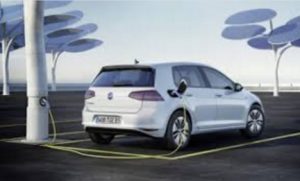 VW EV 2025 target: As Volkswagen Group emerges from its diesel emissions scandal and faces increasingly strict government mandates on reducing vehicle carbon emissions, the German automaker expects
VW EV 2025 target: As Volkswagen Group emerges from its diesel emissions scandal and faces increasingly strict government mandates on reducing vehicle carbon emissions, the German automaker expects  Have you ever taken an Uber ride to the airport, work, concert, or out on a date? Not only have I taken a few Uber rides, I’ve put in quite a few hours and miles on the road as an Uber driver. I’ve also written a non-fiction book about it that was published Friday on Kindle,
Have you ever taken an Uber ride to the airport, work, concert, or out on a date? Not only have I taken a few Uber rides, I’ve put in quite a few hours and miles on the road as an Uber driver. I’ve also written a non-fiction book about it that was published Friday on Kindle, 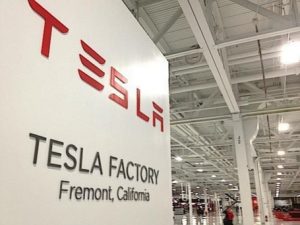 Tesla taking heat over immigrant worker and supplier relations: Tesla Motors has been facing challenges lately on the vehicle manufacturing front; one of these controversies comes from
Tesla taking heat over immigrant worker and supplier relations: Tesla Motors has been facing challenges lately on the vehicle manufacturing front; one of these controversies comes from  Volkswagen CEO Matthias Mueller will be speaking to the company’s senior management in mid-June on how VW will emerge from the diesel emissions scandal more as a
Volkswagen CEO Matthias Mueller will be speaking to the company’s senior management in mid-June on how VW will emerge from the diesel emissions scandal more as a